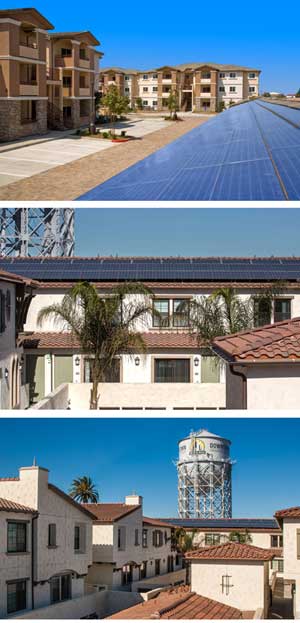Achieving Optimum Sustainability
C&C Development’s mission is to create quality affordable housing that is both attractive and sustainable. All of C&C’s new multifamily developments either have LEED designation or are designed for LEED, underscoring the company’s commitment to build sustainable housing at every opportunity. . LEED promotes a whole-building approach to sustainability by recognizing performance in five key areas of human and environmental health: sustainable site development, water savings, energy efficiency, materials selection, and indoor environmental quality.
Prime examples of that commitment are the ParkView Apartments in San Marcos, CA, and the Depot at Santiago in Santa Ana, CA. ParkView was selected as a 2015 Gold Nugget Grand Award winner in the category “Affordable Housing Community – under 30 du/acre.” A walkable community, ParkView is transit friendly with proximity to bus stops and the North County Transit District and San Marcos Sprinter Station. ParkView incorporates sustainable building components and earned LEED Platinum certification. The property exceeds California’s CalGreen’s Title 24 energy efficiency standards by at least 17.5%.
The Depot a Santiago is a transit-oriented development and is the only affordable housing project in Orange County that in 2015 was awarded $3.9 million in cap-and-trade funding by the California Strategic Growth Council. Depot at Santiago is also the only residential project in Orange County to be recognized by the Southern California Association of Governments (SCAG) for its 2016 SCAG Sustainability Award for Achievement in Integrated Land Use and Transportation. Developed on a 1.35-acre infill site, the mixed-use Depot is designed to achieve LEED Gold Certification, and will exceed California’s Title 24 CalGreen energy efficiency standards by at least 30%.
In addition to achieving high standards of energy efficiency, C&C’s projects are located primarily in urban infill areas that are close to public transportation as well as retail and community services, greatly enhancing their walkability. According to a number of studies, locating a residential development near public transit helps strengthen a community’s health and well-being while reducing greenhouse gas emissions, as well as improving affordability and sustainability.


